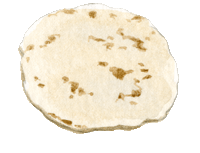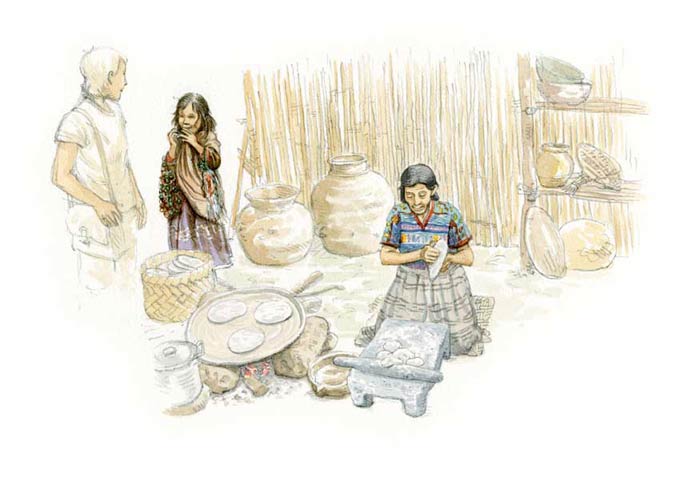Corn tortilla

Form: Shaped like a griddlecake or crêpe, made of corn meal
Country of origin: Mexico
What distinguishes it from other methods of bread making: Made using nixtamalized corn kernels
Category of bread: (2 and 7) In same family as Turkish yufka, Armenian lavash, Tunisian brick, and Lebanese markouk
Particularity: Undoubtedly the same griddlecake the Aztecs and most of the Pre-Columbian populations ate
Ingredients: Nixtamalized corn flour; salt; warm water

Mexico
When the Europeans landed in this Amerindian region, its inhabitants had long ago domesticated corn (Zeal mays), which geneticists and botanists think originated in the valley of the Balsas River in Mexico. In any case, the Spanish did not know of its existence, nor how to use it, but they relished in this extra-thin griddlecake. The Aztecs called it tlaxcalli. The Spanish preferred the word tortilla, which comes from the Spanish word torta (griddlecake), and made it easier for them to get accustomed to. The oldest trace was found in the state of Oaxaca, in the south of the country, and existed before the 5th century B.C.
The corn for the tortillas is subject to a process referred to as nixtamaliation : the corn kernels are cured the day before in a preparation of lime water, which softens the skin and causes it to peel off. The product obtained is called nahualt in Aztec, and the name nixtamalli became nixtamal in Spanish. The women crush it in the morning on a grinding stone referred to as a metate. In more recent times and in cities people have electric grinders at home. The preparation is then kneaded into a dough called masa nixtamalera, and pressed into thin patties. They are then cooked on a comal griddle, similar to that used for most leaf breads.
The conquistadors first fell in love with corn tortillas, and the rest of the world has now followed suit. They are called arepa in Columbia and Venezuela, marapatá in Brazil, and variations are found in the entire Amerindian zone. It is often used abroad in fast food establishments to make Tex Mex dishes such as burritos, enchilada, tacos, etc.

